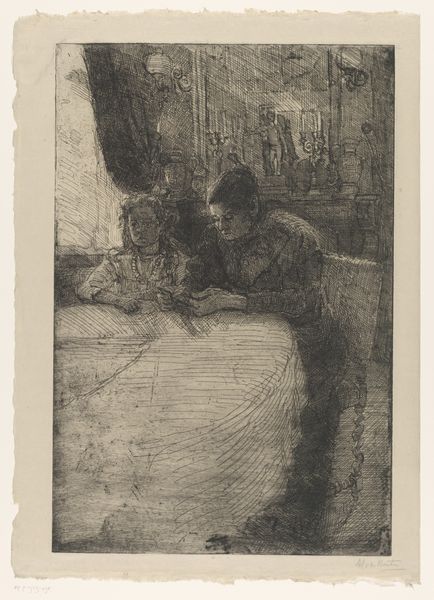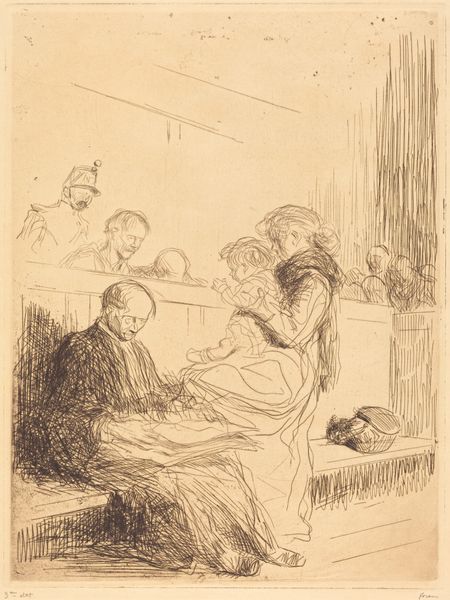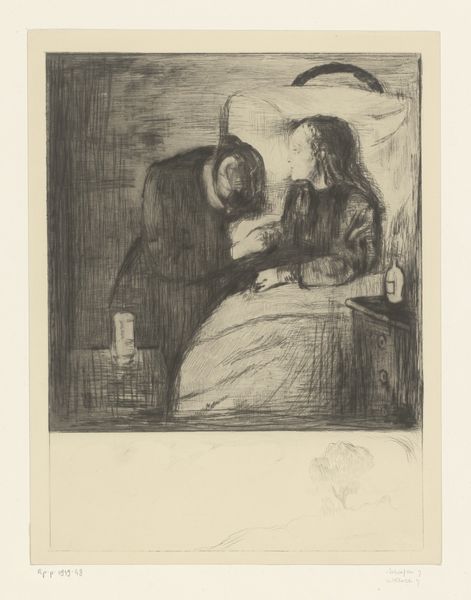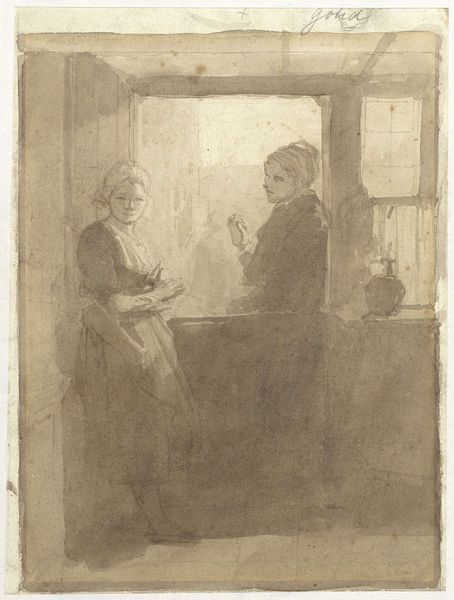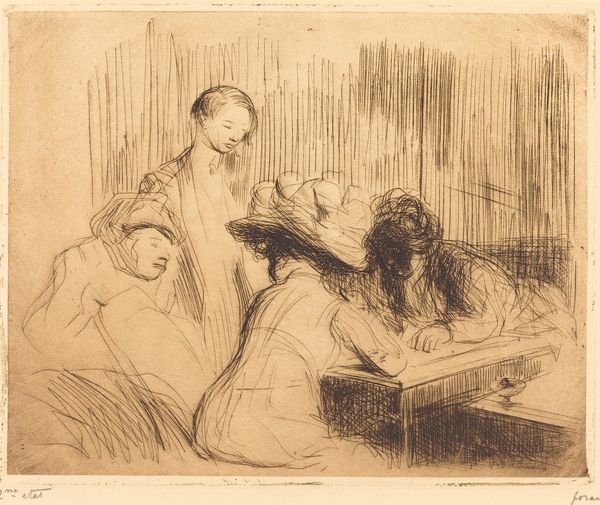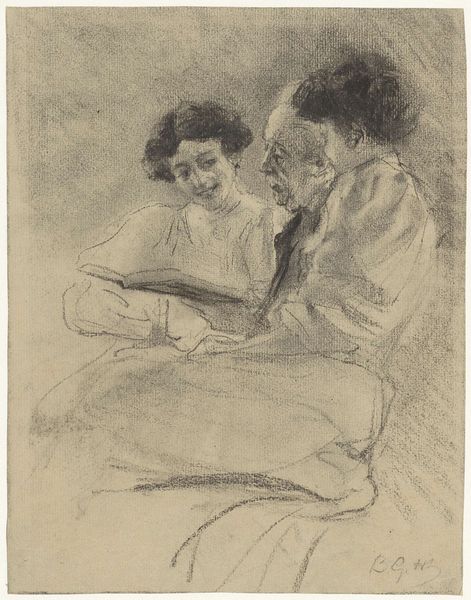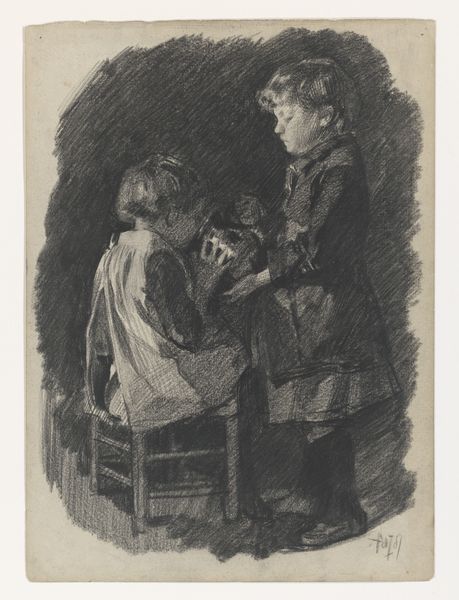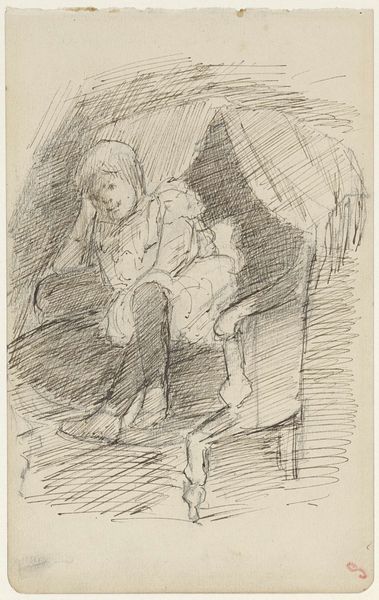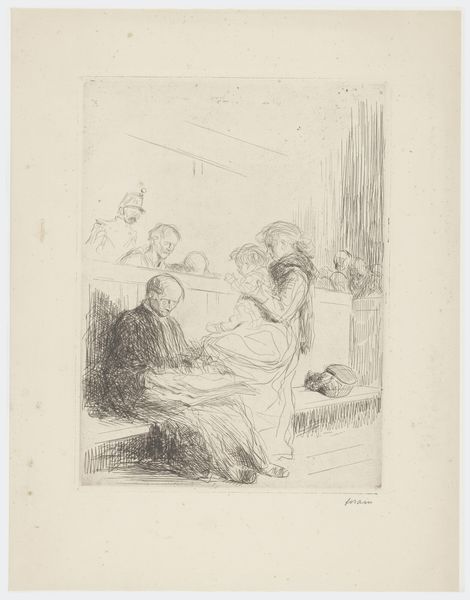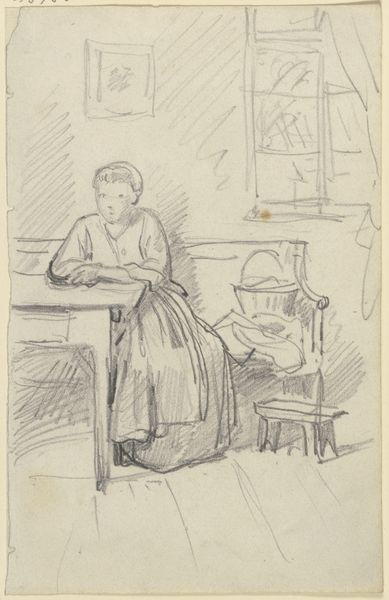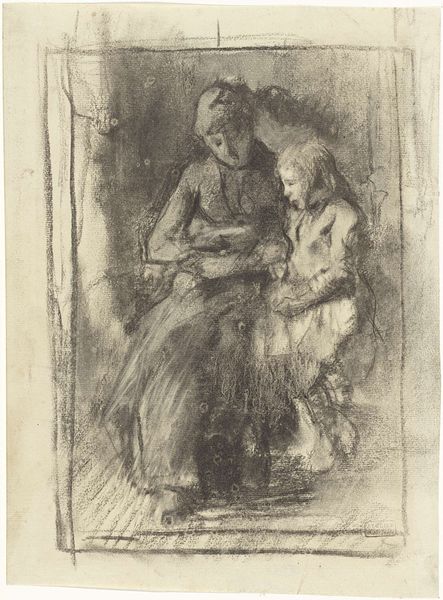
Dimensions: height 375 mm, width 285 mm
Copyright: Rijks Museum: Open Domain
Editor: We’re looking at "Boerengezin," a pencil drawing by Albert Neuhuys, made sometime between 1854 and 1935. There's a tenderness to it, the way the figures are positioned, but the rough, almost unfinished lines give it a melancholy feel. What do you see in this piece, looking at it from a historical point of view? Curator: I see the deliberate construction of an image of rural life, likely intended for an urban audience. Consider when this was made – a period of intense industrialization and urbanization. Images like these provided a nostalgic view of simpler times, reinforcing ideas about traditional family values and the virtue of rural labor. Editor: So, it's not just a snapshot of reality, but a constructed narrative? Curator: Precisely. Neuhuys and his contemporaries were actively shaping perceptions of rural life, often romanticizing it while ignoring the hardships faced by these communities. Look at the details – the woman holding the child, the man leaning protectively – they reinforce specific gender roles and social structures. Editor: That makes me think about who was buying these images. Were they mostly city dwellers longing for something they didn't have? Curator: Very likely. The emerging middle class in cities like Amsterdam and The Hague were developing a taste for genre paintings depicting rural life. They saw these images as both aesthetically pleasing and morally instructive, confirming their own ideas about the proper order of society. Consider the role museums like the Rijksmuseum played in enshrining these values. Editor: I never thought about how much these images could reflect the values of the people buying and displaying them, not just the subjects. Curator: Exactly. Art is never created in a vacuum; it’s always responding to – and shaping – its social and political context. Looking closely helps us see how power operates, even in the quiet intimacy of a family portrait. Editor: It really changes how I see these seemingly simple drawings. Thanks, that was enlightening.
Comments
No comments
Be the first to comment and join the conversation on the ultimate creative platform.
